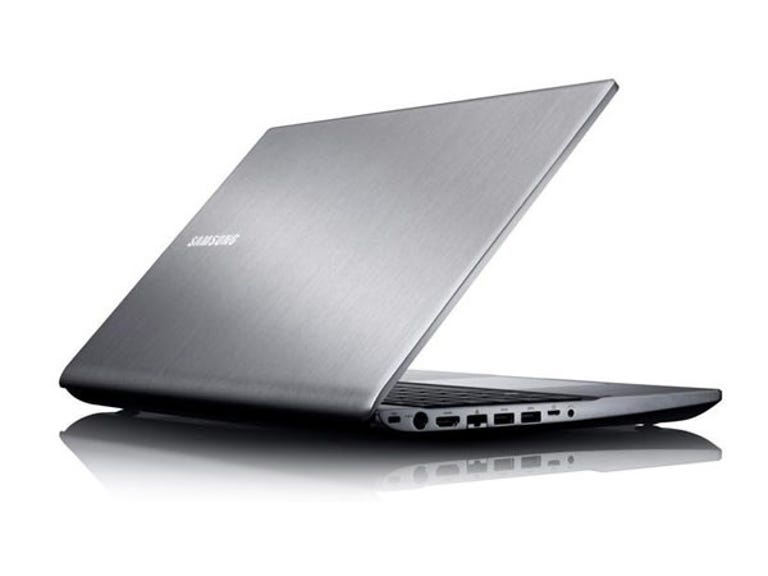 Why You Can Trust CNET
Why You Can Trust CNET Samsung Series 7 (NP700Z5A-S04AU) review: Samsung Series 7 (NP700Z5A-S04AU)
Although the Series 7 is set up to be a premium laptop, the sketchy touch pad and choice of AMD graphics holds it back from being truly great. Still, excellent battery life, the matte screen and backlit keyboard may be enough to sell you.
The Series 7 is rather thin for a 15.6-inch laptop. Not blade thin, but only slightly taller than a MacBook Pro, making it quite manageable.
The Good
The Bad
The Bottom Line
Pleasingly, it also features a matte screen, something incredibly rare these days. Also rare is that it doesn't have a resolution of 1366x768, opting for a significantly nicer 1600x900.
A backlit keyboard, the use of Elantech's multi-touch touch pad and a slot-loading DVD drive sets it up as a premium laptop — a goal at which the Series 7 mostly delivers.
The touch pad's multi-touch is good and mostly predictable, which is increasingly becoming the case on Windows laptops. It has trouble with the basics, however: we found we needed more pressure than usual when tapping, or the input wouldn't register. There also appeared to be a slight delay in all the actions performed, something that may create a disconnect. Physical clicking was an issue as well, with right-clicks frequently not registering for us.
Inside is a Core i5 2430M @ 2.4GHz, 4GB RAM and a 750GB HDD split into system and data drives. An extra AU$500 will see an upgrade to a Core i7 2675QM processor and 8GB RAM.
Something we're starting to see more of is the presence of on-board flash cache, an attempt to bring boot and resume times down. In this case, Samsung's used a SanDisk 8GB "iSSD". Things certainly improve compared to the standard laptop, but it doesn't reach the boot and resume times of say, Acer's Aspire S3.
Samsung has opted to use AMD's Mobility Radeon 6750M as its GPU, switching to Intel HD Graphics to save power when a performance GPU isn't in use. AMD's graphics switching is still significantly behind that of Nvidia's — in the implementation found in Samsung's laptop, the user has to define each application that the discrete GPU is enabled for. It's a slightly smoother process than earlier revisions as the pop-up dialog asking which GPU to use can now be turned off, but it's still nowhere near as seamless as the competition.
You get the average amount of ports for the size of the machine, offering two USB 3.0, one USB 2.0, an SD card reader, HDMI port, gigabit Ethernet and a headset jack. There's also a tiny port that with the help of an included adapter from Samsung adds a VGA port.
Performance
Since our review sample of the Series 7 has a dual-core, standard Core i5 processor, it puts it halfway between the quad-core behemoths and the low voltage processors found in ultrabooks. Given we've only recently switched to a new benchmarks system, we've included both here to give you an idea of where the Series 7 falls, performance-wise.
The take away? Handbrake and Photoshop get the best advantage out of quad-core, but otherwise the performance advantage isn't too great. A fast hard drive also does the Samsung well, the 7200rpm mechanical drive holding out until Photoshop, where the Asus' monster SSD comes out to play.
Metro 2033 is a demanding benchmark, with the Series 7 not coping particularly well as shown by the average frame rates. Batman is much more friendly, though, with even the minimum frame rate just reaching the acceptable mark. This puts the laptop's graphics performance well in the mid-range: capable of some games, but not the cutting edge.
Samsung's battery actually does really well, almost getting into ultrabook levels despite packing heavier hardware. Its heavy battery test versus light battery test shows that AMD has a long way to go in terms of switchable graphics and power efficiency.
Conclusion
Although the Series 7 is set up to be a premium laptop, the sketchy touch pad and choice of AMD graphics holds it back from being truly great. Still, excellent battery life, the matte screen and backlit keyboard may be enough to sell you.


